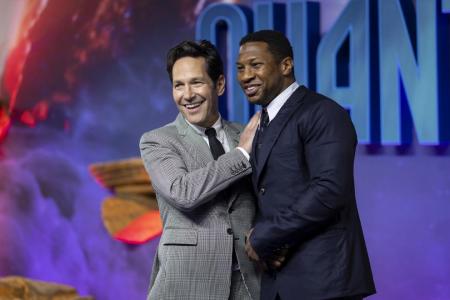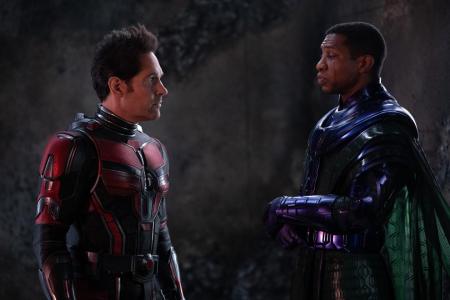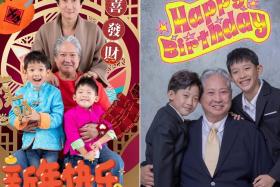Jonathan Majors is Kang, the biggest, baddest villain in MCU
Everyman Scott Lang aka the Little Avenger is back with another adventure.
When a science experient went rogue, Scott — along with his daughter Cassie (Kathryn Newton), Hope van Dyne (Evangeline Lilly) and her parents Janet van Dyne (Michelle Pfeiffer) and Hank Pym (Michael Douglas) — find themselves in the Quantum Realm, a strange world with new creatures and threats.
While the earlier two Ant-Man movies pit Scott (Paul Rudd) against earthly baddies, in Ant-Man And The Wasp: Quantumania, our hero is going up against Kang, supposedly the biggest and baddest villain in the Marvel Cinematic Universe.
Played by Jonathan Majors, Kang was first introduced as He Who Remains in the Disney+ series Loki. Kang is one of the many variants who’s been banished to the Quantum Realm.
Majors, 33, will be the one to watch. Apart from Ant-Man And The Wasp: Quantumania which is now showing in cinemas, the award-winning US actor can next seen in Creed III where he will go mano a mano with Michael B Jordan. Creed III opens here Mar 2.
Then of course, he has two more MCU outings in Avengers: The Kang Dynasty (2025) and Avengers: Secret Wars (2026).
What is Ant-Man And The Wasp: Quantumania about?
With it being a family drama, family secrets are being revealed. It’s a journey of everyone really testing their love and understanding of that family and the past and wrestling with those ideas.
I think the film is ultimately about our relationship to time as human beings and how time plays within our relationships. Love, friendship, legacy: that’s what the story is about, and every character from Hank to Janet to Scott — all of us are touched by that and deal with the threat or promise of time in a different way.
What was it like joining the Ant-Man team?
I had the benefit of stepping into a song that was already playing. The Ant-Man franchise within the MCU has a very clear rhythm to it and I got to just sit back, study the pictures.
It’s very Kang-ish to sit back and study these characters, you know, and then to get in the room with them. You hear their music playing, you understand it and then you can disrupt it.
They are a well-oiled orchestra. Kathryn adds this buoyant energy. Michelle and I worked quite closely together in the picture, and in my opinion, she holds the entire culture of what the Ant-Man franchise is. She was like the bass of the music.
Of course, you have Paul and we’re going at each other. He’s the lead guitarist and the lead vocalist. I’m getting to understand his music and his rhythm — being able to both complement each other and clash. His humour allowed me to get more grounded. And then we just locked horns and moved together. If he went this way, I went that way and if he went that way, I went this way.
Describe your character, Kang the Conqueror.
When we last left Kang, he was a variant called He Who Remains in Loki. But in that final sequence of Loki, he talks about scientists and these other versions of Kang. A version of him is the one we find in the Quantum Realm.
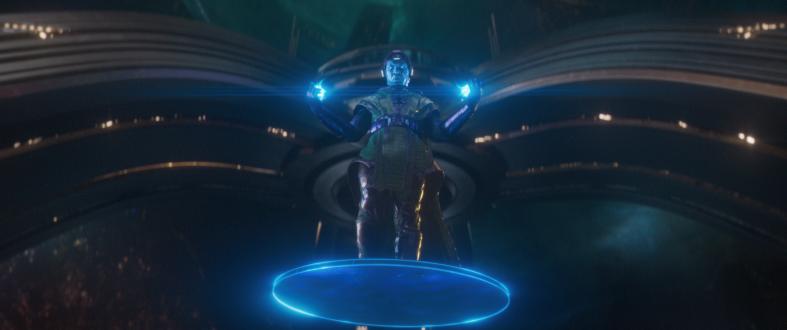
Kang, in general, is such a gift. The most complex, challenging and interesting part is determining how he shows himself and behaves in each variant, which is a collaboration between the actor and the MCU.
For instance, He Who Remains is based upon his hero, Loki. Kang the Conqueror is a bit different. This guy wants to get out.
What is the Quantum Realm and how does it impact the story?
It’s a place of both freedom and imprisonment. The imagination runs wild there. It’s both Willy Wonka’s chocolate factory and Oz all at once.
The multiverse, the Quantum Realm, variants — we have evolved and grown the MCU to a place where it is epic. The stories have always been timeless, but now they’re actually timeless, if that makes sense.
The size of it and the epic nature of it, for me, is most exciting because there’s a challenge to take the mega and make it micro to understand that ultimately, this story is about friendship, love, attachment and abandonment. What we’re doing has repercussions in the future. And we are the consequences of things that happened in the past.
How did you tackle the physical challenges of the role?
He Who Remains essentially wore pajamas and slides — I was quite comfortable. Kang the Conqueror’s idea of combat includes all types of martial arts. He’s done it all. I studied Alvin Ailey’s Revelations — the dancers’ physicality, how they move. We were conscious of creating economy and beauty in how Kang moved and fought and existed.
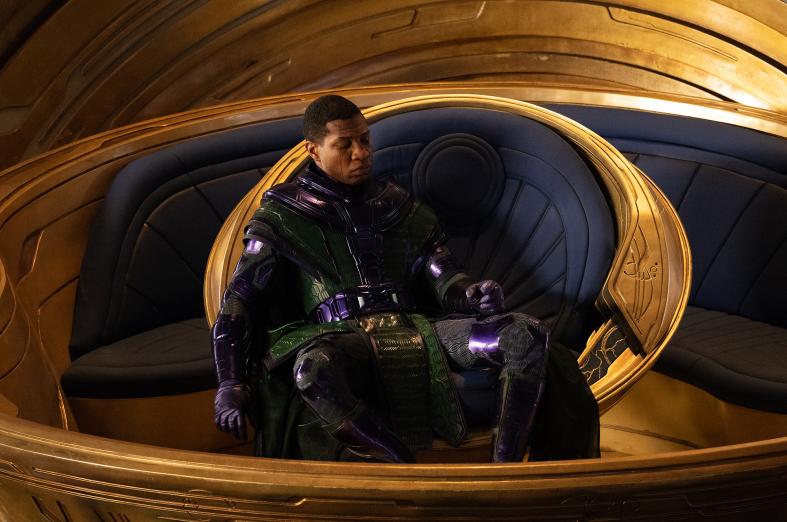
Kang the Conqueror is in full-on battle gear — that’s a different physicality. I don’t know the weight of the costume but when you’re in it, it’s holding onto you. The beautiful thing is that everything is made to the body. I was training so hard throughout the process to feel like Kang and to check the boxes of the fandom, you know, to try to give a formidable presence. I ran every day in costume around set with my music blaring. I was jumping rope constantly. All the sweat you see in the picture was from me — it was extremely physical and extremely taxing, but in the best way.
The physicality of the actual combat in the fight scenes is intense. I think we really took the opportunity to show a character who was flesh and blood after you see how intelligent Kang is. There’s a moment where it is just mano a mano — Ant-Man’s gear has been destroyed, so it’s Scott Lang versus Kang. Two humans fighting each other and using the energy of their own traumas and loves and grief to try to win the day. We probably shot that fight sequence for two-and-a-half weeks. I wanted to do every bit of it because Kang gotta Kang. I had to feel the fatigue and take the blows and take the falls and all of that. It felt like another level of storytelling and the stunt team was incredibly helpful.
Get The New Paper on your phone with the free TNP app. Download from the Apple App Store or Google Play Store now

